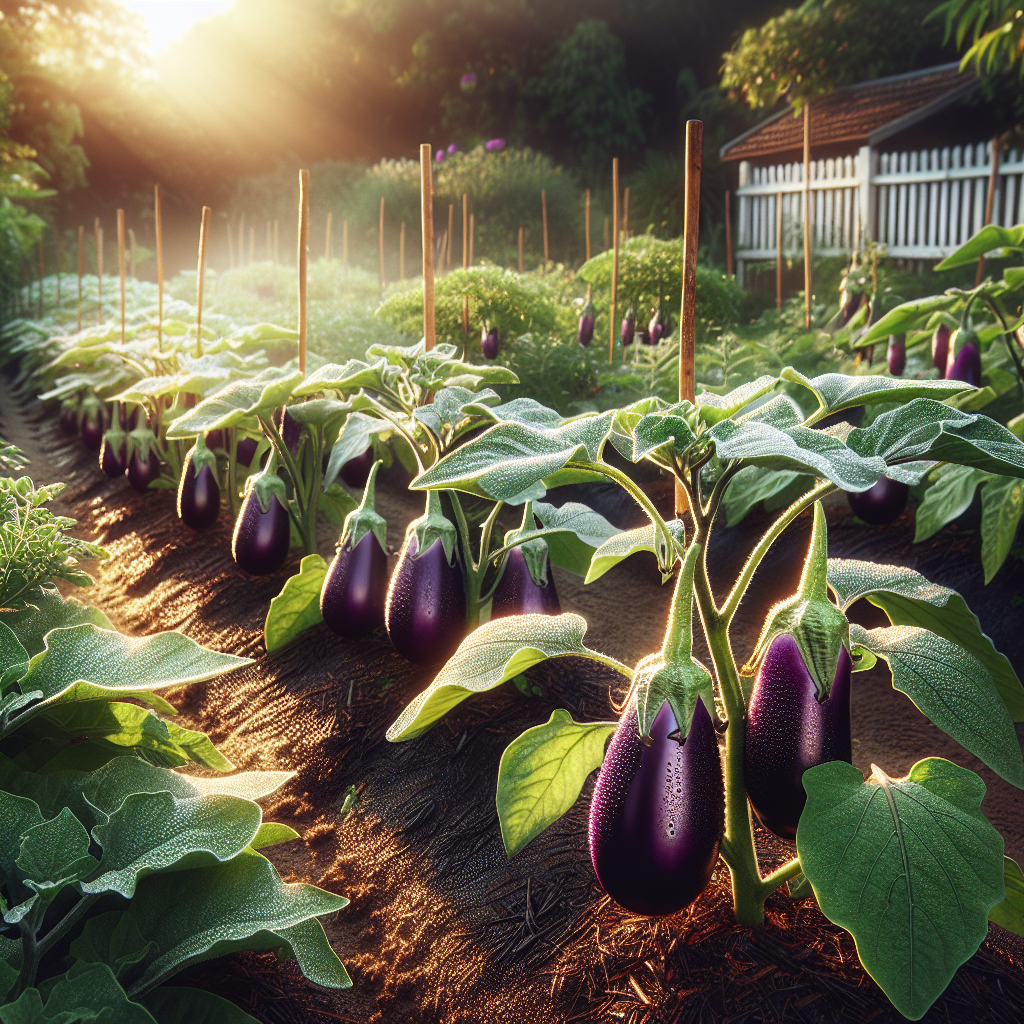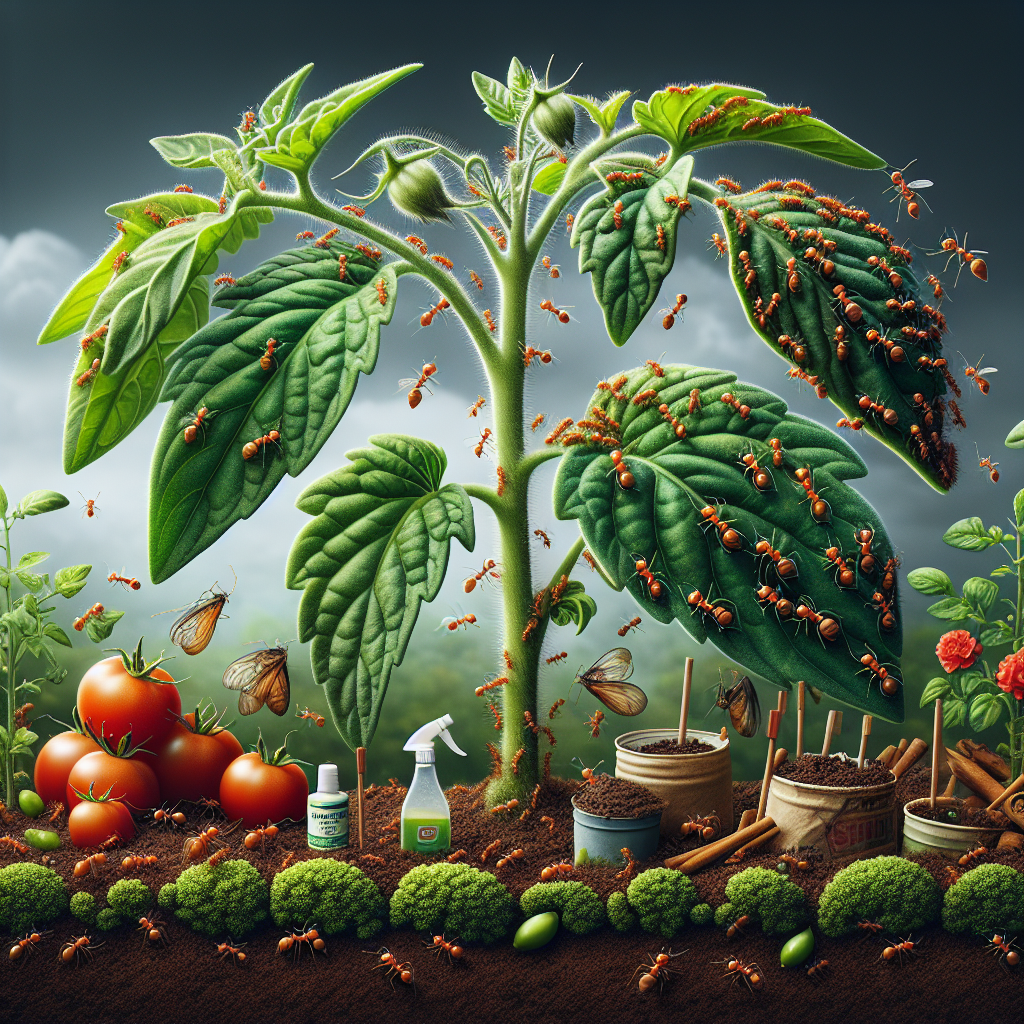Preventing Verticillium Wilt in Shade Trees
Updated May 4, 2024 at 5:57 am
Learn effective strategies to protect your shade trees from the devastating effects of Verticillium wilt, ensuring their health and longevity through proactive care and best practices.

Understanding Verticillium Wilt in Shade Trees
If you’re noticing your shade trees aren’t looking as robust as they once did, they might be suffering from a common fungal disease known as Verticillium wilt. Let’s get to the root of the issue and understand what Verticillium wilt really is – it’s a soil-borne fungus that can lie dormant in the soil for years and affects a wide array of trees, leading to leaf discoloration, wilting, and can sometimes be fatal.
In this in-depth exploration, we’ll cover the bases—from identifying to preventing this unwelcome guest in your garden. It’s essential for you not just to recognize the symptoms early but also to take the right steps to combat and curb the spread of this disease.
Identifying Verticillium Wilt Symptoms in Your Trees
It’s crucial to catch Verticillium wilt early on. Look out for symptoms like yellowing or browning of leaves, which often occur in an asymmetrical pattern. Sometimes, you might see entire branches dying back or leaves dropping prematurely. These symptoms usually appear during the growing season and, sadly, by the time they’re visible, the fungus may have already caused significant damage to the tree’s vascular system.
Choosing Preventative Measures Against Verticillium Wilt
Prevention is better than a cure, particularly with Verticillium wilt, as there’s no definitive “cure” once a tree is infected. Starting with resistant tree varieties is your best bet—Maples, Elms, and Ash, for instance, exhibit varying levels of susceptibility. Researching and opting for less susceptible species or varieties can significantly diminish the chances of an outbreak on your property.
- Pet Friendly: While not a direct concern for pets, it’s still important to maintain a healthy environment for both your plants and animal companions.
- Light Requirements: Affected trees still need adequate sunshine to fight off disease – ensure your trees aren’t shaded too much by buildings or other plants.
- Watering: Overwatering can exacerbate fungal growth, so maintaining a balance is critical.
- Humidity: Maintain moderate humidity levels to discourage fungal proliferation.
- Temperature: Fungal diseases thrive in certain temperatures – being aware of your climate can aid in prevention.
- Difficulty: Managing Verticillium wilt is no easy task and requires vigilance and informed care of your trees.
The Role of Soil Health in Preventing Verticillium Wilt
Soil health is your foundation. A well-balanced, nutrient-rich soil supports overall tree health, making them less prone to diseases. Regular soil tests can be invaluable—they not only reveal the nutrient status but also give you insight into possible remnants of Verticillium fungi.
Amending soil appropriately based on test results can bolster tree defenses. For instance, adding organic compost can improve soil structure and encourage beneficial microorganisms that may naturally suppress Verticillium populations.
Effective Cultural Practices for Disease Management
Cultural practices—a fancy term for your gardening habits—play a crucial role in disease prevention. Ensuring proper spacing between trees prevents overcrowding and promotes good air circulation, reducing the humidity that fungi love. Mulching is another smart step, as it maintains soil moisture and temperature levels, controls weeds, and provides a barrier between the soil and tree branches.
Pruning can be a double-edged sword: while it’s necessary to remove infected limbs to prevent the spread of the disease, it can also open pathways for the fungus to enter if not done correctly. Always sanitize your tools between cuts, especially when dealing with an infected tree.
Fungicidal Solutions: Natural and Chemical Controls
Although there’s no surefire fungicide for Verticillium wilt, there are certainly ways to manage the soil environment to discourage the fungus. Some gardeners have explored the use of beneficial fungi and bacteria to outcompete the Verticillium fungus, such as Trichoderma species. It’s critical, however, to consult with a plant pathologist or a local extension office to assess the feasibility and method of application for your particular situation.
In terms of chemical controls, fungicides containing potassium phosphite have been reported to aid in managing Verticillium wilt. They’re purportedly helping to boost plant immunity and hinder fungal growth. Remember, when dealing with any form of chemical control, thorough research and adherence to application guidelines are paramount for both effectiveness and safety.
Diagnosing Verticillium Wilt: When to Call the Experts
If you suspect your tree may be infected with Verticillium wilt, getting a definitive diagnosis is important. This is where the experts come in—arborists, plant pathologists, or your local cooperative extension service can provide analysis and advice that’s specific to your tree’s condition and your local area. They can perform more intricate tests, like tissue sampling, that go beyond the visual symptoms to confirm the presence of Verticillium.
Engaging with professionals doesn’t just help with a diagnosis; they can also devise a management plan tailored to your tree’s needs, considering factors like age, health, and value to your landscape. This customized approach maximizes the chances of your tree’s recovery or, if necessary, guides you through the safe removal and replacement process.
Long-Term Strategies for a Verticillium Wilt-Free Garden
Looking for a long-term strategy? Crop rotation isn’t just for farms—it’s also applicable in your home garden. It might seem impractical with large shade trees, but if you’re replacing an affected tree, avoid planting the same tree species in that spot. Additionally, improving biodiversity by planting various species can limit the spread and impact of diseases like Verticillium wilt.
Beyond individual practices, consider the wider ecosystem. Attracting beneficial insects and promoting an environment where natural predators of disease-carrying pests can flourish is a holistic way to sustain the health of your garden. This could mean planting pollinator-friendly flowers or creating habitats for birds and other wildlife.
Integrating New Shade Trees: The Safe Way to Replenish Your Garden
If you’ve lost a tree to Verticillium wilt, you may be considering replanting. The key here is to select resistant species or cultivars—we’ve touched on the importance of this previously, but it bears repeating. Research and consult with local experts to make informed choices.
Properly integrating new trees into your landscape also means paying close attention to planting depth, soil conditions, and aftercare. Ensure your new trees have a solid start with a good mulching technique, appropriate watering practices, and regular health checks. This helps them to establish strong immunity and resilience against potential pathogens.
Be Proactive: Early Detection and Routine Checks
Perhaps the most important takeaway for preventing Verticillium wilt is to be proactive. Regularly inspect your trees for signs of stress, keep an eye on the condition of leaves, and be vigilant about changes in tree health. Early detection can make a world of difference in coping with this disease.
Routine checks give you a leg up on not only spotting the early symptoms of Verticillium wilt but also on managing other potential threats to your trees. by staying ahead of the curve, you’re positioning yourself as the best defense against this stealthy enemy.
When Products Come into Play: Managing Verticillium Wilt
Let’s get real about products that might help in the fight against Verticillium wilt. There’s a natural fungicidal product that’s been getting some attention lately—neem oil. Known for its broad-spectrum fungal suppression, neem oil can be a beneficial additive to your garden care routine. Applied as a soil drench, it’s thought to create an environment less hospitable to Verticillium.
Reviewing gardeners’ experiences, there’s a consensus on neem oil’s preventative power, though it’s not a silver bullet. Many emphasized how it helped maintain overall plant health, which can, in turn, deter various diseases. If you’re considering integrating neem oil into your regimen, it’s a great natural option worth exploring. Remember, always follow the product instructions to the letter.
Find This and More on Amazon
Soil Solarization: A Natural Approach to Suppressing Fungus
Ever heard of soil solarization? It’s a non-chemical method that involves covering the soil with clear plastic during the hot summer months to increase soil temperature to levels that can kill Verticillium and other soil-borne pathogens. This technique might be particularly useful in smaller garden areas where infected trees were removed.
Soil solarization also helps to reduce the viability of fungal spores and can even control weed seed germination. It can take several weeks to be effective, and the high temperatures must penetrate several inches into the soil to reach the depth where the fungus lives.
Nurturing Beneficial Organisms in the Soil
A healthy soil ecosystem is bustling with life, including organisms that are natural enemies to Verticillium wilt. Adding mycorrhizal fungi to your soil can create a symbiotic relationship with your trees, promoting growth and health while potentially reducing the impact of diseases.
Including organic matter like compost in your soil is another way to feed these beneficial organisms, making the soil environment less inviting for Verticillium fungi. It’s a way of naturally enhancing your soil’s defense system.
Identifying Trees Already Resistant to Verticillium Wilt
There’s good news in the battle against this pervasive disease: some tree species are naturally resistant to Verticillium wilt. Among these resilient species, you’ll find the flowering dogwood, Ginkgo biloba, and certain conifers. When planning your garden, incorporating these resistant varieties can be a strategic move for long-term health.
It’s important to note that ‘resistant’ does not mean ‘immune.’ While these trees are less likely to contract the disease, it’s still crucial to maintain good cultural practices and monitor the overall health of your trees.
Understanding Your Regional Risk for Verticillium Wilt
Different regions pose different levels of risk for Verticillium wilt. Factors like local climate, soil type, and common gardening practices can all influence the likelihood of encountering this disease. Staying informed about your regional risk can guide your prevention strategies.
Checking with local nurseries, fellow gardeners, or extension offices can provide valuable insights into prevention measures that are effective in your specific area. Being aware of regional risks empowers you to take proactive, targeted actions to protect your garden.
Housekeeping: Sanitation and Cleanliness in the Garden
Sanitation might seem like a basic practice, but it’s one of the most effective ways to prevent the spread of Verticillium wilt. Disposing of infected plant material properly—whether it’s leaves, branches, or even soil—is crucial.
Don’t compost diseased plant parts as this can spread the pathogen. Instead, burn them or dispose of them through municipal waste services, if allowed. Keeping your garden tools clean by disinfecting them after each use can also minimize the spread of disease.
When and How to Use Professional Soil Fumigation
In cases where Verticillium wilt poses a significant threat, professional soil fumigation might be an option. This is a method where soil is sterilized to remove pathogens before planting.
Soil fumigation is more extreme and less environmentally friendly than other methods mentioned, and it’s often reserved for severe infestations or high-value crops. It also requires professional application, adhering to strict safety regulations.
Community Actions Against Verticillium Wilt
The fight against Verticillium wilt doesn’t just happen in your backyard—it’s a community-wide effort. Sharing knowledge about the disease, its prevention, and management can help to curb its spread throughout your local plant ecosystems.
Participating in community gardens or local agriculture programs can also enhance communal resistance to Verticillium and other plant diseases by fostering collective knowledge and resources.
FAQs: Addressing Common Concerns
Dealing with Verticillium wilt often comes with questions. Homeowners wonder about the safety of eating fruit from affected trees, or how long to wait before replanting in the same area. Establishing an FAQ section on community boards or through extension services can help address such concerns.
Providing solid, research-based answers can empower individuals to make informed decisions and take appropriate actions when faced with Verticillium wilt.
Final Words on Verticillium Wilt Management
While Verticillium wilt is indeed a formidable garden adversary, it’s not unbeatable. With knowledge, proactive management, and the joint efforts of gardeners, we can minimize the impact of this disease.
Staying vigilant, practicing healthy gardening habits, and using available resources and products wisely can help ensure that our shade trees continue to thrive for years to come. Let’s nurture the green canopy that graces our gardens and communities with beauty and shade.
“`html
Adopting a Holistic Approach to Tree Health
It’s imperative to approach tree health from a holistic perspective. A tree that is well-cared for and growing in a stress-free environment is more likely to resist infection. This involves regular feeding with appropriate fertilizers, watering deeply but infrequently to encourage strong root growth, and monitoring for pests as these can open wounds in the tree’s defenses.
Furthermore, consider companion planting with flowers or shrubs that bring beneficial insects to your garden. These insects help in controlling pests that could weaken your trees, leaving them more vulnerable to diseases like Verticillium wilt.
Monitoring New Plant Introductions to Avoid Contamination
Whenever you introduce a new plant to your landscape, it carries the potential risk of bringing in soil-borne diseases. It’s wise to be cautious and inspect new plants for signs of disease before integrating them into your garden. Quarantining new plants, although often overlooked, is a good practice that can prevent the spread of Verticillium wilt.
If you’re fond of sharing plants with friends or receiving them, it’s equally important to ensure that these plants, too, come from healthy, disease-free environments. It’s all about being mindful of what comes into your garden as much as caring for what’s already there.
Stress Factors: Understanding Environmental Impacts on Trees
Environmental stress factors such as drought, poor drainage, injury, and extreme temperatures can all compromise a tree’s immune system. Recognizing and mitigating these factors where possible plays a critical role in disease prevention. For instance, installing drainage solutions in waterlogged areas can go a long way in preventing root diseases.
It’s important to adapt your care regimen to the specific needs of your trees based on their environment. This kind of attentiveness can help your trees maintain their natural disease resistance.
Educational Resources and Community Involvement
Knowledge is a powerful tool in the fight against Verticillium wilt. Many cooperative extension services offer valuable educational resources on tree health and disease prevention. By participating in workshops or webinars, you’re equipping yourself with the knowledge needed to protect your garden.
Community involvement can also amplify the impact of disease control efforts. Organizing local garden clubs or discussion groups helps spread awareness and create support networks for managing Verticillium wilt and other plant health concerns.
Learning from History: Historical Outbreaks and Responses
We can learn a lot from previous encounters with Verticillium wilt. Investigating historical outbreaks and responses provides insights that can inform contemporary management strategies. For instance, understanding patterns in past occurrences might reveal specific conditions that favor the emergence and spread of the disease.
Also, examining how past gardeners and arborists responded to outbreaks can highlight valuable lessons on what practices to implement or avoid in managing Verticillium wilt currently.
Tree Health Checklists: Staying Organized and Informed
Creating a tree health checklist can help you monitor the wellbeing of your shade trees systematically. Key items might include checking for discoloration or wilt of leaves, inspecting the trunk and branches for damage, and ensuring the soil is healthy and not compacted.
By regularly going through your checklist, you can catch early signs of Verticillium wilt or other health issues that require attention.
Recap: Best Practices for Verticillium Wilt Prevention
To wrap up, let’s summarize the best practices for preventing Verticillium wilt in your shade trees. Start with selecting resistant tree varieties, focus on maintaining good soil health, and follow effective cultural practices like proper spacing and pruning. Consider natural and chemical controls judiciously and consult experts when in doubt.
Be mindful of environmental stress factors and the introduction of new plants, adopt a holistic approach to tree health, and stay organized with health checklists. By following these strategies, you can greatly reduce the likelihood of Verticillium wilt invading your garden.
Additional Tips and Tricks for a Healthy Garden Ecosystem
Last but not least, remember that your garden is a living ecosystem. Encouraging a diversity of species and creating habitats that foster beneficial wildlife are both strategies that contribute to overall garden health. In the case of shade trees, maintaining a diverse underplanting can support soil health and reduce the chance of disease taking hold.
Also, consider methods like compost tea applications, which can improve the microbial life in the soil, thus supporting your trees’ vitality. While there’s still debate about the efficacy of such practices, they’re worth exploring as part of a whole-system approach.
For Additional Reading:
If you’re keen on diving deeper into the intricacies of plant health in low light, caring for snake plants offers a wealth of information. For those with more specific concerns, like creating a pollinator-friendly garden or winter vegetable gardening, these articles provide targeted advice to fine-tune your greening endeavors.
In conclusion, combating Verticillium wilt in shade trees is about diligence, informed action, and community cooperation. While the battle against this persistent fungus may be ongoing, equipped with the right knowledge and resources, you can create a lush, healthy, and wilt-free canopy to enjoy for many seasons to come.
“`
Shop more on Amazon
Flowers & Plants Team
Flowers & Plants Team


